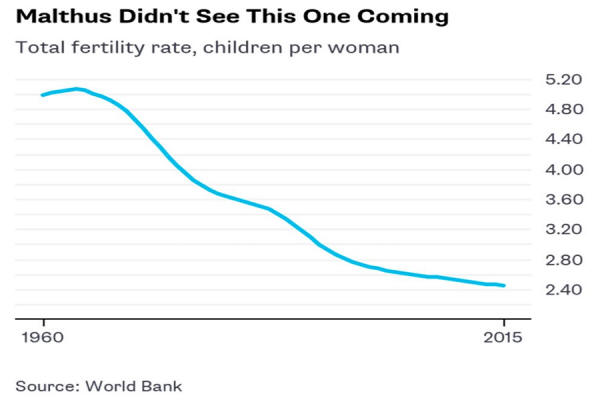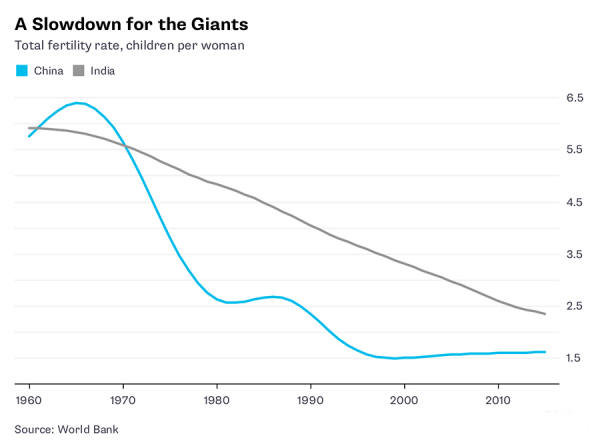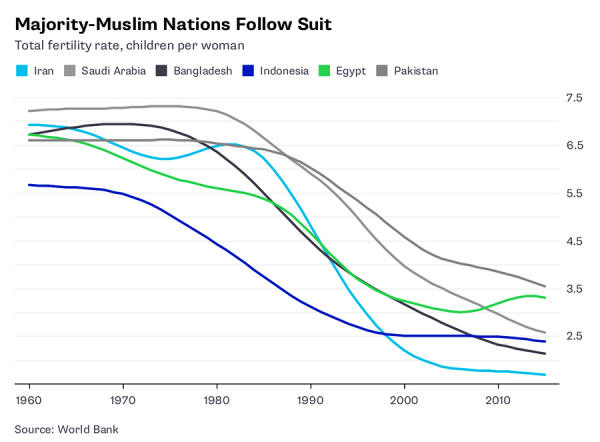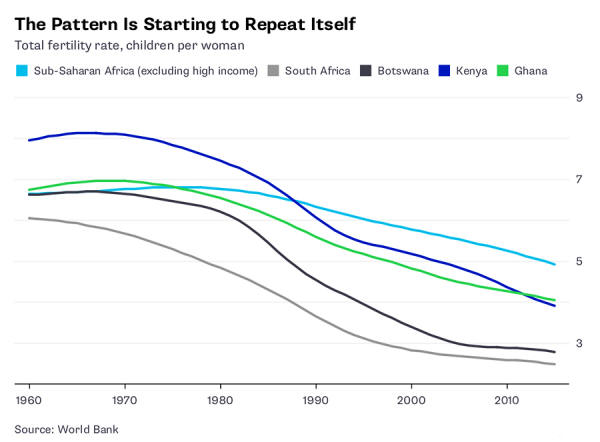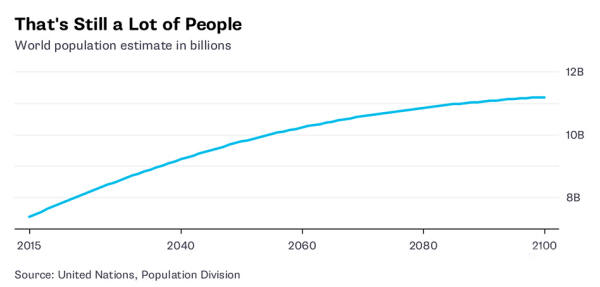|
from
Bloomberg Website
will survive as fertility rates
fall almost everywhere.
Thomas Malthus, a British economist writing in the late 1700s, is the most famous of these.
Extrapolating past trends into the future, he predicted that population growth would inevitably swamp available food resources, leading to mass starvation.
That didn't happen - we continued to develop new technologies that let us stay ahead of the reaper.
In 1968, Stanford biologist Paul Ehrlich wrote "The Population Bomb," warning that unchecked population growth would lead to mass starvation in the 1970s. He was just as wrong as Malthus. Global population did surge, but food production managed to keep up.
So far, the prophets of overpopulation have been defeated by technology.
But human ingenuity alone can never deliver a final victory in the battle to feed the world - eventually, population growth will overwhelm the Earth's ability to provide calories.
That's why in order to put Malthus and Ehrlich finally to rest, a second component is needed:
To save both the environment and themselves, humans must have fewer kids.
Fortunately, this is happening. During the lifetimes of Malthus and Ehrlich, humans still tended to have large families, with each woman bearing an average of five children over her lifetime.
But shortly after Ehrlich's book, that began to change: The total fertility rate is just an estimate, based on the number of children women have been having.
When the rate is lower than about 2.1, it means total population will eventually stabilize and decline.
The world is now approaching that magic level, thanks to a phenomenon known as the fertility transition. In most countries, total fertility falls from a high level of about six or seven children to two or below, and stays there.
Once smaller families become the norm in a country or region, they very rarely go back up. There are a number of theories for why this happens. The shift from agriculture to urban life means less incentive for families to have kids to work on farms.
Urban life also increases the cost of raising a kid.
Higher education levels for women, freeing them from traditional gender norms, are probably a big factor as well. Importantly, none of these factors are temporary.
In other words, the fertility transition probably represents the ultimate, final victory over the Malthusian threat. The supergiant countries of China and India have been especially important in this process.
Still, as overall world fertility has fallen, overpopulation concerns have shifted from global to regional.
If some regions continue to have big families forever, they will eventually outgrow the regions with limited population growth, causing the overall world fertility rate to go back up.
People who worry about overpopulation are now concerned that some cultures will simply always have more kids.
So far, those concerns seem to be unfounded. A decade ago, many believed that Muslim culture, with its emphasis on traditional gender roles, would defy the fertility transition. But then fertility rates in majority-Muslim countries plunged.
Iran, Saudi Arabia, Bangladesh and Indonesia have mostly completed their fertility transitions, while Egypt's and Pakistan's are underway. As an aside, it's worth noting that these World Bank estimates of total fertility rates tend to err on the high side - the CIA, which also tracks fertility, places Pakistan's number all the way down at 2.62.
So now the worry has shifted to sub-Saharan Africa. With a fertility rate of about five births per woman, it's the only region of the globe that has not yet made the jump to small families.
But even here, there are signs of change in a small but growing number of countries. Countries such as Nigeria, Ethiopia, Tanzania and the Democratic Republic of the Congo still have very high fertility rates.
But if these last holdouts fall, the global triumph of small families will be complete.
Fortunately, there are two other patterns that suggest Africa will not buck the trend and overpopulate the world.
First, there's a strong association between fertility and income levels - once a country passes about $5,000 in per capita annual gross domestic product, it almost never has a high fertility rate.
Rapid growth in a number of African countries means that this level will be in reach within a few decades.
Also, the transition appears to be happening much faster than in the past - it took the U.K. 95 years to drop from a fertility rate of six children per woman to three, but it took Botswana only 24, Bangladesh 20 and Iran only 10.
Of course, it's worth noting that lower fertility won't immediately defuse the population bomb. The number of people in a country continues to rise for years after young people stop having lots of kids - a phenomenon known as population momentum.
Thus, the United Nations continues to project that global population will rise from about 7.6 billion today to more than 11 billion by the end of the century. Nor will lower global population growth mean the end of all demographic problems.
Much of sub-Saharan Africa will be overflowing with people for decades to come, and many of those people will want to migrate to wealthy, aging countries in search of better economic opportunities, or to escape wars.
That migration pressure will be a touchy subject for many nations, as the recent refugee wave in Europe has shown.
But it's looking like the dire predictions of Malthus and Ehrlich will never come to pass. Unlike other animals, humanity has voluntarily limited its reproduction.
The population bomb has probably been defused...
|



